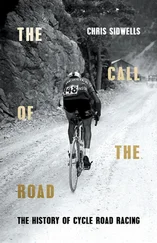You see, I am a product of someone else's generosity. I am what I am because some stranger showed me love, empathy, compassion, and care—the things that make us truly human. We are slowly losing these qualities in the age of exponential technology development and usage. I would not be here if it weren't for another human being whom I had never met caring deeply and wanting a better life for me.
The way we are training technology systems today, I am afraid we may not be passing on these amazing human qualities to systems and machines that are increasingly running human lives. The way technology is being developed and commercialized has reached a point where some of its components are not serving humanity's best interests.
I vividly remember sitting in the audience at TED conferences listening to one speaker giving a mesmerizing but also terrifying talk about AI. Computer scientist Supasorn Suwajanakorn showed us how, as a grad student, he had used AI and 3D modeling to create photo-realistic fake videos of people synced to audio. These are now commonly known as deepfakes . I sat there with my head spinning, wondering about how this technology could be misused and abused. This—along with many technology abuses that have affected me personally or that I keep reading about—played a huge role in setting me on this path.
With a very strong conviction, “somebody has to do something about this” became the new tune on “repeat” in my head. Not long after hearing that TED talk, I became pretty convinced that for the next decade, I needed to put my energy, resources, and time toward focusing on the unintended consequences of technologies (UCOTs).
If not me, then who; if not now, then when? I dove right in!
I founded the Institute for Unintended Consequences of Technology (UCOT), where my team and I bring together thousands of people from all walks of life, such as technologists, policy makers, futurists, engineers, professors, change makers, entrepreneurs, investors, philosophers, artists, students, and other thought leaders. Our mission is 1) to advance public understanding, awareness, and perception on unintended consequences of technologies, and 2) to accelerate solutions and collaboration toward a collective large-scale action.
In this book, I provide concerned citizens, business professionals, and people in decision-making positions with a blueprint for key technologies on their current and future potential unintended consequences. The book also includes tips on how best to prepare yourself, your community, your businesses, and our shared spaceship called planet Earth about what's to come.
I have chosen a few technologies and trends that I believe have the ability to transform what it means to be human and what I strongly believe every leader should pay attention to today. Technology is not good or bad; it's just a tool. It's who we are as a people that make it good or bad. And sometimes the bad brings lots of concerns.
Within technology's concerns and dangers hides an opportunity of first-mover advantage:
To reactively create solutions for the things already going wrong
To proactively strategize and mitigate future potential harm before it happens
There are technologies in this book like AI and big data that have huge unintended consequences as stand-alone trends. However, the applications of data and AI also overlap a lot with other technologies and other trends. My goal is to write about them individually, but they will also keep coming up in the other subjects.
This book suggests a series of steps we can take to deal with the unintended and willfully ignored consequences of technologies. The bad news is that so long as technology is here, so are its negative externalities. Those two go hand in hand. The good news is that with intention, smarts, and safety engineering we can deal with unintended consequences of technologies before they even occur. This book breaks down what needs to be done to get there into two parts.
Part I: How Humanity Got into This Mess. Chapter 1explains how capitalism, greed, and the myth of meritocracy got us into this mess and is keeping us there. Chapter 2explores the power imbalance between governments of nation-states and the giant technology companies (tech-states) founded by a handful of its citizens.
Part II: Technologies and Trends with Lots of Promise but also Uncertainty. The chapters in Part IIexplore different technologies such as 5G, AI, gene editing, blockchain, and many more that are extremely powerful, with a potential to fundamentally change what it means to be human and the future of our planet.
In most chapters, I begin with the definition of the specific technology, a brief history, some positive use cases, and negative unintended consequences, and end with what has been done to deal with these consequences or what can we do to proactively prevent them from happening in the first place.
The unintended consequences of technology are a huge existential crisis, but I also see solving them as a huge opportunity. We have the ambition thanks to the passions of a growing global movement led by young people who are deeply concerned about the unintended consequences of technologies. What we need is a will to act.
The global movement on how to deal with UCOT is filled with technologists, policy makers, futurists, engineers, professors, change makers, entrepreneurs, investors, philosophers, artists, students, and other thought leaders. What I propose in this book is based on the guidance and learnings I have gotten from experts and visionaries in these fields.
In the final chapter, I share the concrete steps each of us can take to help the world deal with the unintended consequences of technologies. Whether you are a technologist, a government leader, or a citizen of this world, there are things you can do to help keep humanity from innovating itself into extinction.
I truly believe that, with advancements in technology, 100 years from now we may have a well-optimized world that works for everyone. Or there may not be any world left to optimize. The choice is ours!
If you are a business leader, this book is for you. If you are a human being, this book is for you. Let's dive in!
PART I HOW HUMANITY GOT INTO THIS MESS
CHAPTER 1 Capitalism: The Cult of Self-Sufficiency
Capitalism is an economic system where people and companies make most of the decisions and own most of the property. The means of production are largely or entirely privately owned (by individuals or companies) and operated for profit, rather than owned by the state. The United States practices free-market capitalism, whereby the prices of goods and services are determined by supply and demand (the free market), rather than set artificially by a third party such as the government.
You may be wondering why this book starts with this topic in Chapter 1. Well, anything and everything technology- or systems-related that we discuss in this book has developmental incentives and motivations largely aligned with capitalism. You will hear capitalistic power echoing through every chapter in this book. In addition, most negative unintended consequences of technology (UCOTs) strongly correlate with misalignment in incentive structures. That's why capitalism is covered in Chapter 1. The nature of capitalism and the UCOTs caused by it and consumerism set the stage for all the topics covered in this book.
A QUICK HISTORY OF CAPITALISM
Technology in the scientific and industrial revolutions transformed humanity's understanding of the world. Technology transformed our ability as humans to alter that same world. And this altering of our world is now aligned and heavily driven by a major force, known as capitalism.
Читать дальше












